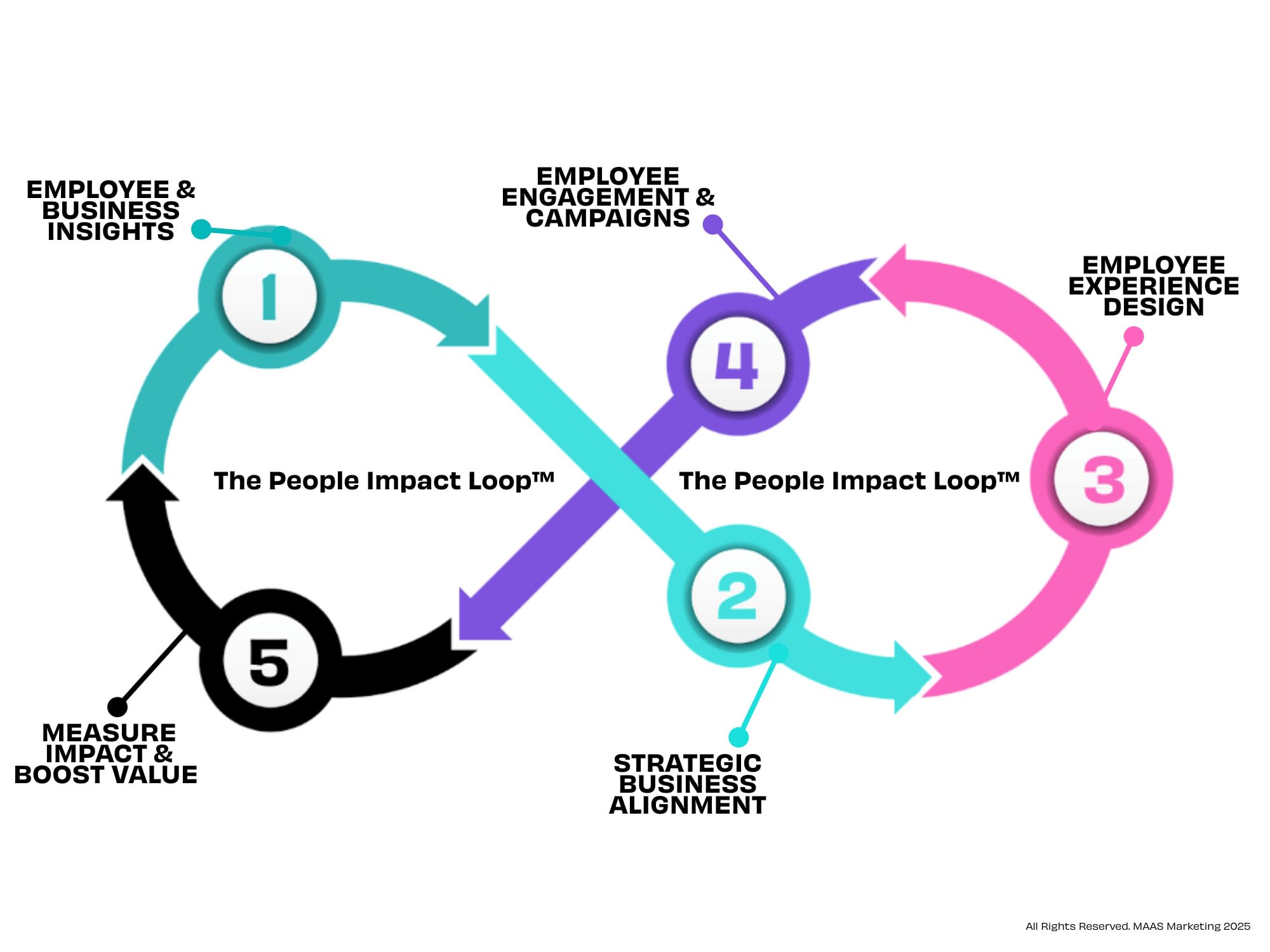want some cookies?
We use cookies to make your browsing experience amazing.

“Let’s run a wellbeing session.”
“Can we get some leadership training in Q2?”
“Free pizza Fridays will make them happy.”
Sound familiar?
People teams are flooded with requests like these — well-meaning, urgent, and often… completely misaligned. Because while the symptoms may be clear, the root cause is usually buried under layers of culture, communication, and structural dysfunction. And if you don’t take the time to dig deeper? You end up throwing solutions at the wrong problem.
And the result? People functions that feel performative, not practical. Workshops that raise awareness but change nothing. Pulse surveys that reveal discontent but drive no action. Your team gets stuck in a cycle of surface-level fixes — and the business still wonders what you actually do.
THE REAL COST OF MISALIGNMENT
When People functions act as order-takers instead of strategic partners, everyone loses. You burn time, budget, and credibility on programmes that don’t move the dial. Engagement stays flat. Capability gaps persist. And worst of all? The business still thinks your work isn’t adding value.
What looks like a learning need might actually be a leadership clarity issue. What’s framed as a burnout crisis might be a workload or process problem. And that shiny new eLearning module? It’s not going to fix any of it if you haven’t asked the right questions first. (And neither are more team bonding days, JFYI!)
Misalignment doesn’t just cost time — it costs influence. The more People teams chase quick fixes, the less they’re trusted to drive change. Over time, the function becomes reactive, not respected. Operational, not strategic. And once you're seen as “just HR,” it’s really hard to shift that narrative.
STRATEGY ≠ MORE ACTIVITY
Too many HR and L&D teams equate strategy with activity. The calendar is full. The comms plan is packed. There’s lots available. But is any of it actually aligned to business goals?
Real strategic alignment means:
Understanding what the business is trying to achieve
Identifying the people-related blockers to that success
Designing targeted, insight-led interventions to remove them
Proving impact in ways the business actually values
It’s not about launching more. It’s about launching what matters. If your People function isn’t driving business performance, it’s just noise.
INTRODUCING THE PEOPLE IMPACT LOOP™
The People Impact Loop™ is designed to ensure everything your team does is aligned with business strategy, engages employees, and proves its impact – so you can stop justifying your existence and start driving measurable value. And phase 2 of the PIL™ is where strategy starts to get real.

After you’ve gathered insights about your employees and the organisation (Phase 1), Strategic Alignment forces you to ask:
How can our People function directly support the business priorities that matter most right now?
It’s not about responding to what stakeholders ask for. It’s about partnering with them to uncover what the business actually needs. It requires confidence. Curiosity. And a willingness to say “no” to surface-level requests if they don’t serve the bigger picture. This is where People teams stop being service providers — and start becoming strategic operators.
HOW TO SHIFT FROM SURFACE-LEVEL TO STRATEGIC
1. Ask better questions:
Don’t just take requests at face value. Ask what outcome they’re trying to achieve — and what’s blocking it.
2. Challenge assumptions:
If someone asks for “resilience,” ask why. Is the problem stress? Overwork? Poor management? Flawed systems?
3. Connect to KPIs:
If a People initiative can’t be tied to a business goal or performance metric, hit pause.
4. Stop treating outputs like outcomes:
Training delivered ≠ capability built. Engagement survey completed ≠ culture improved. Define what good actually looks like — and track to that.
5. Be proactive, not passive:
Bring data. Spot trends. Make recommendations. Don’t wait for the business to come to you — show them where People strategy can drive performance.
6. Use business language:
If your updates only make sense to HR, you’re not aligning. Speak in terms your CFO, COO, and CEO care about.
WHAT ALIGNMENT LOOKS LIKE IN PRACTICE
Let’s say the business goal is to reduce customer churn. A surface-level People response might be “Let’s do a training session on empathy.”
But a strategically aligned response digs deeper:
Why are customers leaving?
Are frontline teams empowered to solve problems?
Are our managers coaching for quality or speed?
Now you're looking at onboarding, enablement, leadership, process, and culture — not just a course. And you’ll be solving the issues in each of those functions. That’s the difference alignment makes.
IT’S TIME TO ALIGN WITH WHAT MATTERS
The People Impact Loop™ is your roadmap for making People work that actually works. Strategic Alignment isn’t a buzzword — it’s the difference between being seen as a cost centre or a competitive advantage.
If you're tired of launching initiatives that don’t stick, getting vague feedback from the business, or being seen as “just HR” — this is your moment. Stop solving the symptoms. Start targeting the real problems.










